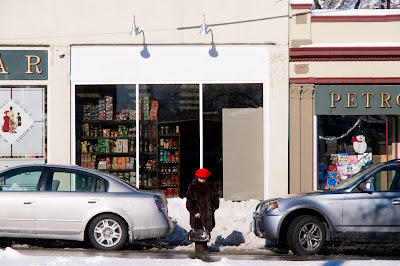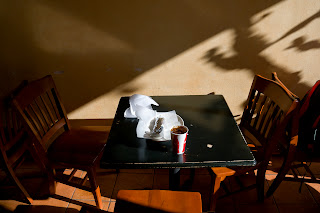Labels
1984
2012 calendar
2013 calendar
abstract
aesthetics
agnostic
Alfred Glover
Alfred Stieglitz
Ansel Adams
apollo
aquinnah
art
art form
art show
artists' circle
arts foundation
back river
barlow
beacon street
bicycles
boston
boston marathon
bourne
brewster
brookline
budapest
cambridge
cape cod canal
Cape Neddick
captain Kidd
cat boat
cataumet
cataumet arts center
chapoquoit
chilmark
Christ lutheran church
climate change
coolidge corner
cotuit center
county galway
county mayo
cranberry
Desiree Davila
doo lough
easter
eastham
Edward Weston
falmouth
faust
firenze
florence
freedom
Geraldine Mills
goethe
green line
harvard square
harvest
hen cove
Henry Peach Robinson
herreshoff
highland light
iran
ireland
japan
kamaishi
Kesennuma
khorasan
kittery point
lough mask
lough nafooey
louisburgh
Maine
martha's vineyard
Mary Colt
menemsha
minamisanriku
mistakes
monk's cove
monument beach
mounting a large print
nauset light beach
Ned Manter
new bedford
newcomb hollow
newport
Newtown
nobska
north falmouth
nubble
ofunato
old silver beach
orleans
pamet river
parker's boatyard
patuisset
persian rug
philippines
photography
phusion
pictorialism
pienza
pocasset
privacy
prometheus
provincetown
quissett
quissett harbor boatyard
red bicycle
religion
rikuzentakata
robert manz
robert manz studio
roonagh
Sandwich
Shapiro
skaket
so big
squibnocket
studio
suffering
sunrise
sunset
surf drive
thanksgiving
the harvest
theory
truro
tuscany
umbrella
val d'orcia
village market
vinci
war
wellfleet
west falmouth
west tisbury
woods hole
yamadamachi
York
also visit my web site at www.robertmanz.net
31.1.11
30.1.11
27.1.11
25.1.11
24.1.11
23.1.11
done
"The Harvest"
24" x 48" archival pigment ink print on rag paper
varnished with acrylic varnish, mounted on aluminum panel,
in a cherry wood frame.
21.1.11
three cheers for pictorialism
I write this to defend a much-maligned style of photography that had its day in the late nineteenth century and early twentieth century. The pictorialists believed that they were making pictures, and, as artists, they had the right to use any techniques that their imagination suggested to them. Given the time and the technology, their options were severely limited by the absence of color (unless of course they chose to hand color their prints). They were limited to monochromes, as were all other photographers until the development of color film.
What I like most about the pictorialists was their objective, which was to make pictures as a vehicle for their emotional engagement with their subject matter.
One of the most noteworthy of the pictorialists was Alfred Stieglitz, but he was also one of the last, perhaps because he so strongly denounced his former aesthetic when he became enamored of a new group emerging that proclaimed a different aesthetic for photography. That was the "f64" group, whose members included some very notable artists, e.g. Edward Weston and Ansel Adams.
Weston and Adams and the others were seeking an aesthetic in photography that especially capitalized on qualities intrinsic to and exclusive to the camera and photographic media. They seized upon the resolving power of the lens and film, and they stated explicitly that any intervention of the photographer beyond making a perfect exposure was extraneous and superficial......not "real" photography. They used the term "straight" for what they were seeking, the "straight" image.
I love the images that this group produced, but I believe that in their overwhelming success photographic art has been ill-served. The first problem they created is that by invoking the "f-stop" as the definition of what they were doing, they disastrously reinforced the notion that photographic art is a matter of mechanics and machinery rather than a pursuit of the soul and the imagination. The second, and related problem that they created is that they imposed on photography an aesthetic of super-resolution. I mean to say that "sharpness" became the defining quality of a photograph. If it's not sharp, it's not a good photograph.
I love sharp photographs, but I think it is absurd to believe that perfect focus and high resolution are the only aesthetic ground available to the photographer artist. I think there are as many aesthetics available as there are creative minds and souls practicing the art. Why should all good photographs look the same way? There is plenty of variety in the aesthetics of paintings, why not in photographs too ?
Feeling comfortable with all the possibilities of photography is worth thinking about in the digital age when there are no obvious limitations to what can be done with a photograph. It can now become anything that the photographer artist wants it to be, limited only by her or his imagination and technique.
The digital age is the time for a new pictorialism, not embarassed, not ashamed of not being "straight"............ just happy in its creativity.
Three cheers for pictorialism !!!
What I like most about the pictorialists was their objective, which was to make pictures as a vehicle for their emotional engagement with their subject matter.
a composition of five negatives....
"Fading Away" 1858
Henry Peach Robinson
One of the most noteworthy of the pictorialists was Alfred Stieglitz, but he was also one of the last, perhaps because he so strongly denounced his former aesthetic when he became enamored of a new group emerging that proclaimed a different aesthetic for photography. That was the "f64" group, whose members included some very notable artists, e.g. Edward Weston and Ansel Adams.
Stieglitz in his pictorialist years
"Gossip" 1905
Alfred Stieglitz
Weston and Adams and the others were seeking an aesthetic in photography that especially capitalized on qualities intrinsic to and exclusive to the camera and photographic media. They seized upon the resolving power of the lens and film, and they stated explicitly that any intervention of the photographer beyond making a perfect exposure was extraneous and superficial......not "real" photography. They used the term "straight" for what they were seeking, the "straight" image.
I love the images that this group produced, but I believe that in their overwhelming success photographic art has been ill-served. The first problem they created is that by invoking the "f-stop" as the definition of what they were doing, they disastrously reinforced the notion that photographic art is a matter of mechanics and machinery rather than a pursuit of the soul and the imagination. The second, and related problem that they created is that they imposed on photography an aesthetic of super-resolution. I mean to say that "sharpness" became the defining quality of a photograph. If it's not sharp, it's not a good photograph.
I love sharp photographs, but I think it is absurd to believe that perfect focus and high resolution are the only aesthetic ground available to the photographer artist. I think there are as many aesthetics available as there are creative minds and souls practicing the art. Why should all good photographs look the same way? There is plenty of variety in the aesthetics of paintings, why not in photographs too ?
Feeling comfortable with all the possibilities of photography is worth thinking about in the digital age when there are no obvious limitations to what can be done with a photograph. It can now become anything that the photographer artist wants it to be, limited only by her or his imagination and technique.
The digital age is the time for a new pictorialism, not embarassed, not ashamed of not being "straight"............ just happy in its creativity.
Three cheers for pictorialism !!!
20.1.11
17.1.11
15.1.11
14.1.11
13.1.11
12.1.11
10.1.11
9.1.11
So Big - sponsored by the Arts Foundation of Cape Cod at Cotuit Center for the Arts
Art Show Tonight
So Big
Art and Life
"Memory Circles" by Terry Gips, left "Gallery Visitor" by Paul Schulenburg, right |
"Stone Flow" by Judith Motzkin |
Interview
Tiffany van Mooy |
Self Portrait
"Subconscious Arising" Coco Larrain |
A show of work by Cape Cod artists to explore the concept of what is big.
7.1.11
4.1.11
2.1.11
1.1.11
Subscribe to:
Comments (Atom)






































